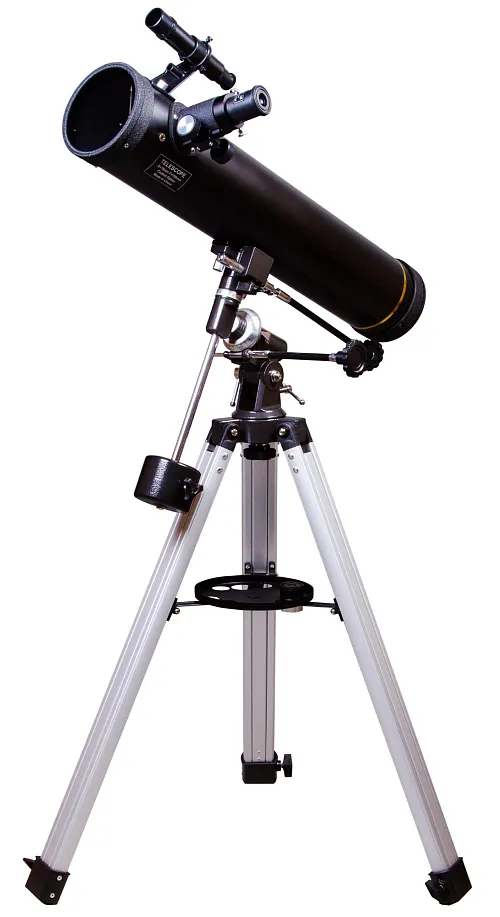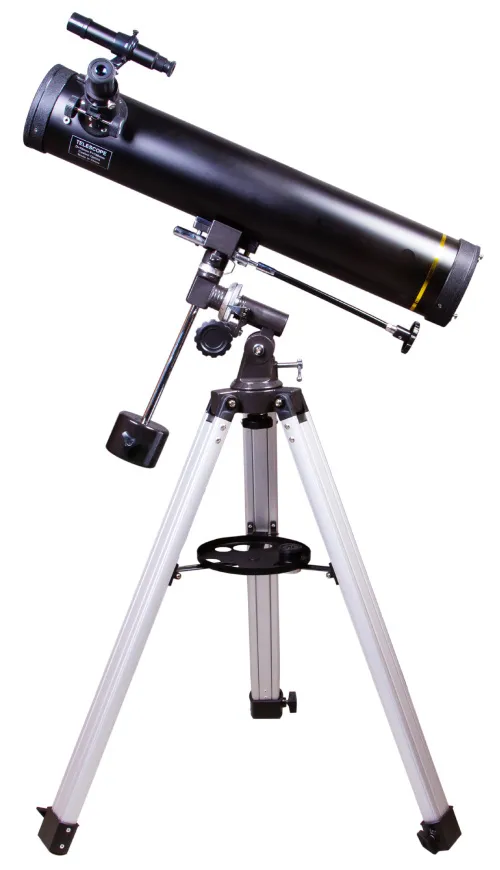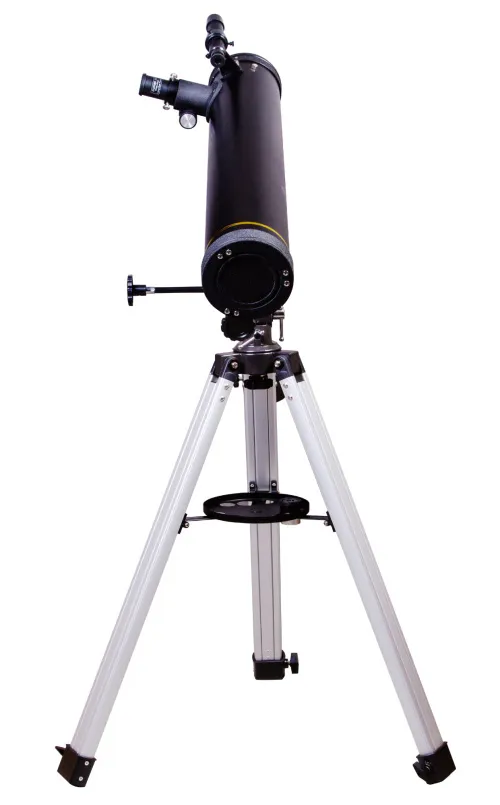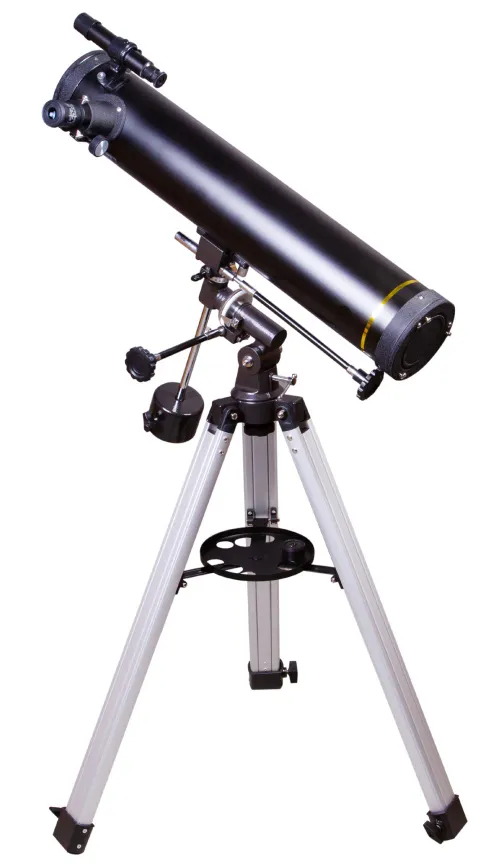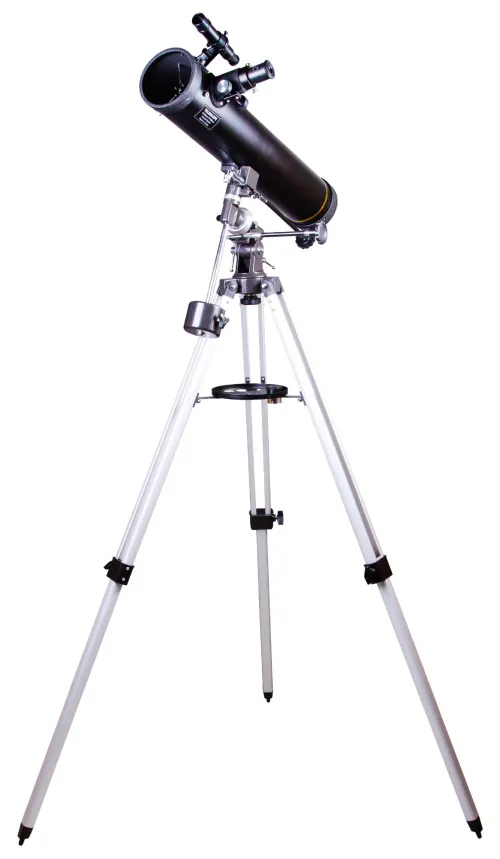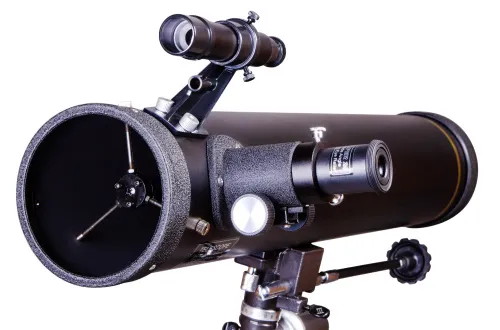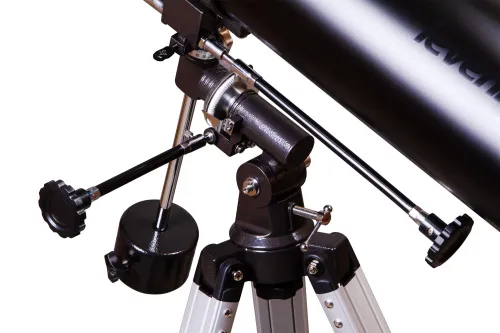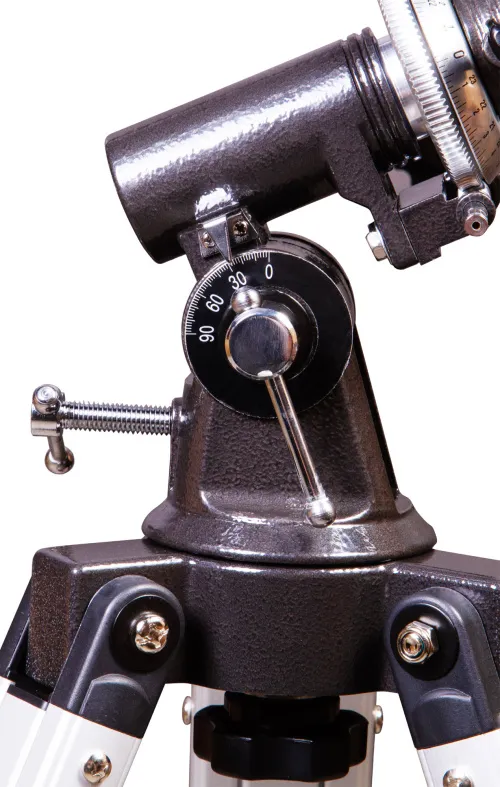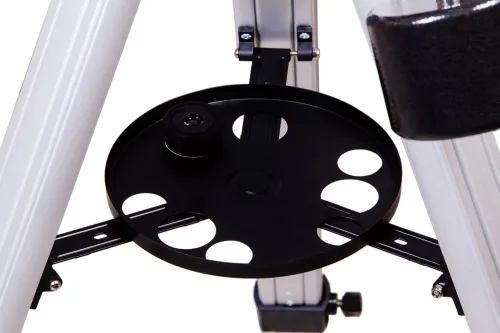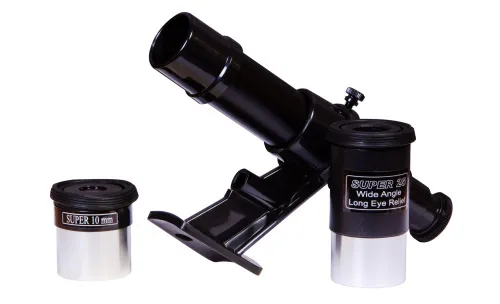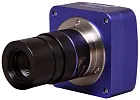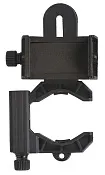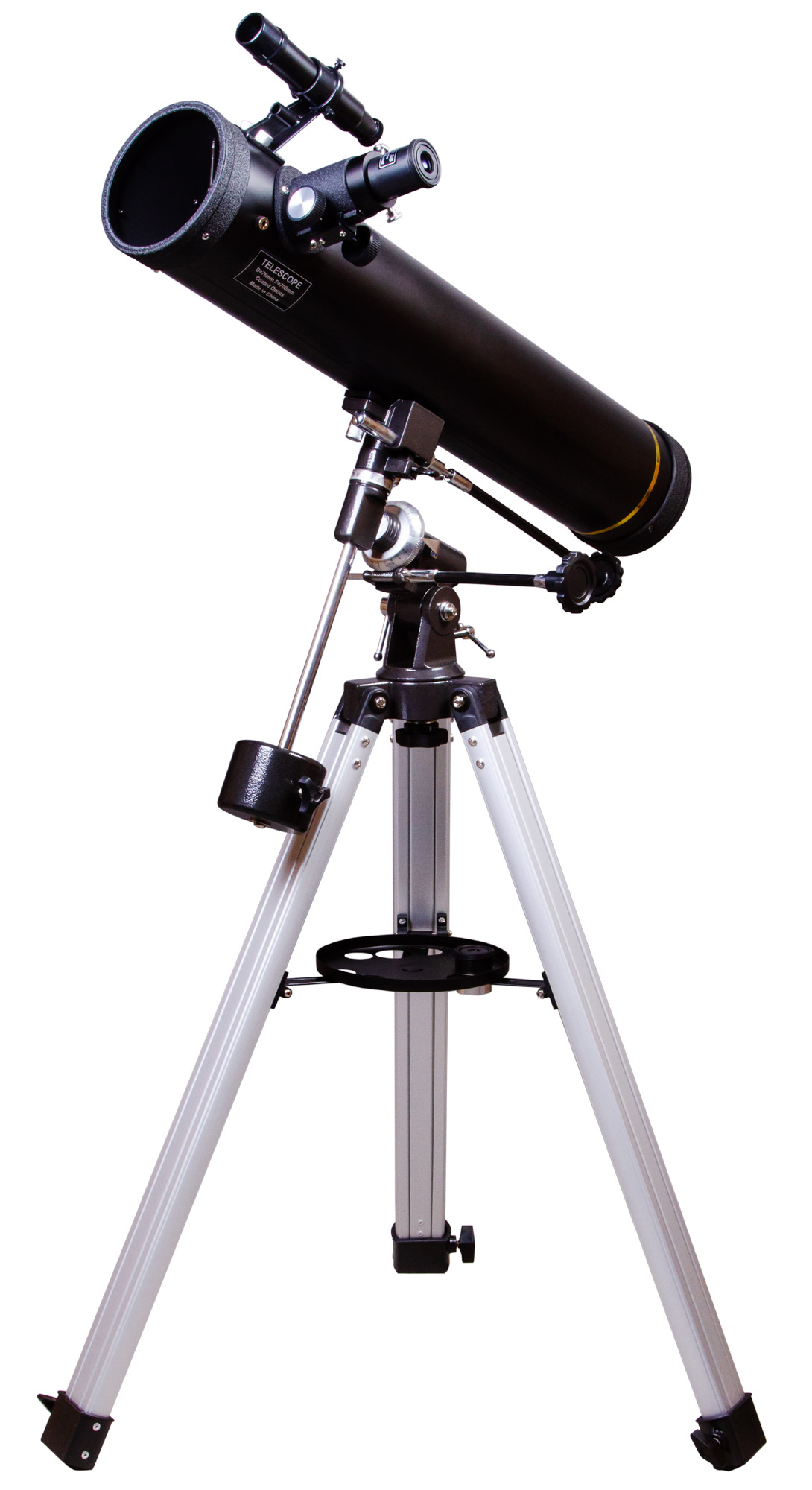Levenhuk Skyline PLUS 80S Telescope
Newtonian reflector. Aperture: 76mm. Focal length: 700mm
| Product ID | 73803 |
| Brand | Levenhuk, Inc., USA |
| Warranty | lifetime |
| EAN | 5905555002217 |
| Package size (LxWxH) | 97x30x24 cm |
| Shipping Weight | 9.52 kg |
The Levenhuk Skyline PLUS 80S Telescope is a telescope for experienced and demanding users. This Newtonian reflector is perfect for observing deep-sky objects: You can observe all of the objects from the Messier catalog and the brightest objects from the NGC catalog. Dozens of star clusters, planetary, and diffuse nebulae are available for observation. Outer space is also available for exploring and that includes lunar craters, the rings of Saturn, atmospheric vortices on Jupiter, weather conditions of Mars, phases of Mercury, etc. Even Uranus and Neptune are discernible but only as small disks.
The optics in the telescope are made of fully coated glass. The included accessories are chosen in such a way as to maximize the capabilities of the optics. By using two eyepieces and a Barlow lens together, you can achieve the highest useful power, which allows for observing astronomy objects as detailed and sharp as possible, or vice versa, you can opt for a wide field of view for the observation of extended deep-sky objects. With a fully packed telescope kit, there is no need to buy any additional accessories.
The telescope is mounted on an equatorial mount that allows for smooth tracking of astronomical objects across the sky. However, it takes some time to master the operation of the telescope. The mount is attached to an aluminum tripod. You can place it almost anywhere because of the extendable legs with several sections. The telescope comes with an accessory tray.
Features:
- Entry-level Newtonian reflector
- Suitable for exploring deep and outer space
- Equatorial mount is ideal for astronomy observations
- A stable tripod of adjustable height
- Balanced kit of optical accessories is included
The kit includes:
- Telescope optical tube
- Equatorial mount
- Aluminum tripod with an accessory tray
- 6x24 optical finderscope
- SUPER 10mm eyepiece
- SUPER 25mm eyepiece
- 2x Barlow lens
- Slow-motion control knobs
- Counterweight
- User manual and lifetime warranty
| Product ID | 73803 |
| Brand | Levenhuk, Inc., USA |
| Warranty | lifetime |
| EAN | 5905555002217 |
| Package size (LxWxH) | 97x30x24 cm |
| Shipping Weight | 9.52 kg |
| Optical design | reflector |
| Optical scheme | Newtonian |
| Optics material | optical glass |
| Optics coating | standard |
| Primary mirror diameter (aperture), mm | 76 |
| Focal length, mm | 700 |
| Highest practical power, x | 152 |
| Aperture ratio | f/9 |
| Resolution threshold, arcseconds | 1.58 |
| Limiting stellar magnitude | 11.5 |
| Eyepieces | SUPER 10mm (70x), SUPER 25mm (28x) |
| Eyepiece barrel diameter, in | 1.25 |
| Barlow lens | 2x |
| Finderscope | optical, 6x24 |
| Focuser | rack & pinion |
| Tripod | aluminum |
| Tripod height (adjustable), mm | 650–1200 |
| Accessory tray | ✓ |
| Telescope control | manual |
| Mount | equatorial, EQ1 |
| Optical tube mounting mode | fastening rings |
| Optical tube material | metal |
| User level | beginners |
| Assembly and installation difficulty level | complicated |
| Observed object | deep-sky objects |
Convenient diagrams that describe how to install additional accessories on refractors and catadioptric telescopes
Find out how to assemble a telescope on an example of the Levenhuk Skyline 90x900 EQ telescope
This short guide will help you avoid typical mistakes and learn more about telescope and mounting types
The basics of astronomical observations for beginners
In this article we have gathered answers to some of the most frequently asked questions about telescopes
The most interesting celestial objects you can observe with Levenhuk telescopes
How telescopes work?
You can actually perform observations from your balcony!
All about telescope sizes, types, magnification, and mounts
Learn how to set up and use the telescope properly
Astronomy in light-polluted skies. Find out what you can observe in the city
Read an interesting comprehensive article on telescopes for little astronomers
The pictures are made with Levenhuk telescopes
Celestial objects you can observe with telescopes of different apertures
Colored and vivid images of galaxies, planets and star clusters entrance everyone who is fascinated by boundless space
Find an interesting review on the history of the changes to a refracting telescope
To make the process of choosing a telescope easier, we will tell you about the characteristics of the most popular types of telescopes today
Learn everything you need to know about refractor telescopes to make the right choice

